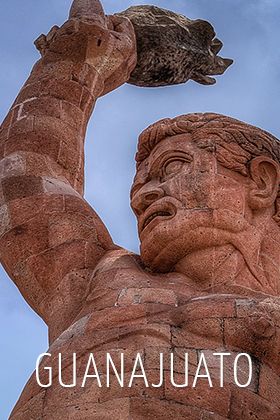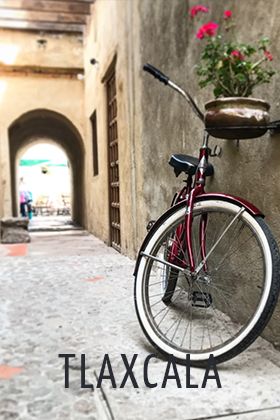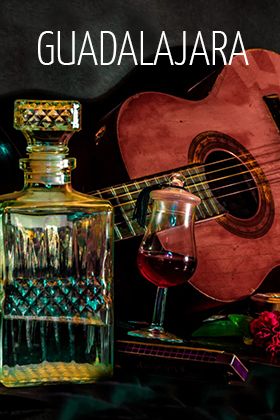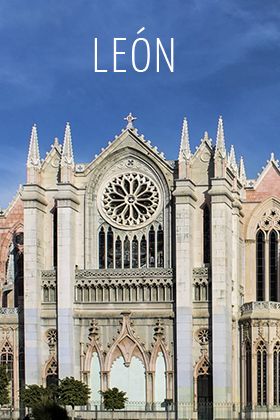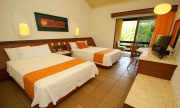About Mexico City
by: Travel by México
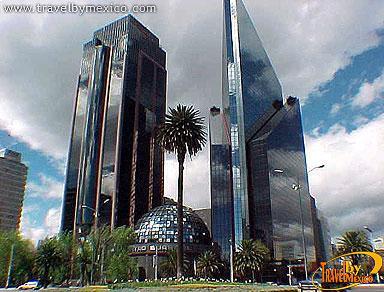
About Mexico City
by: Travel by México
There is no doubt that Mexico City is a city as old as it is complex. Founded in 1325, it was the last epicenter of power for the cultures passed down for generations of the red race and the scenario in which the indigenous peoples and the Spaniards violently merged in the blood of the conquest.
The Great Valley of Mexico is a basin between two mountain ranges standing at 7,349 feet above sea level, covering an area of 1,208 sq miles, in which a total of more than 20 million people live.
In this moving mass of city that devours the landscape there are; 2.6 million automobiles including the mass transport system, the metro subway system which moves 5 million users daily through the intricate network of tracks and stations, 316,000 companies which make up 80% of the total in the country, generating a 24.1% share of the gross domestic product, 344 hospitals, 25,000 hotel rooms, 161 museums, 30 concert halls, 106 art galleries, and 107 movie cinemas....all comprising together the world’s largest city
This central highland region of Mexico has been inhabited for 20,000 years, so long so that its full history has been lost in time. However, it is known that around the 13th century, the ethnic group of the Mexicas come to this area led by the priest Tenoch, and concluded their secular pilgrimage by finding an eagle devouring a snake on a cactus plant: the sign that they had been given to search for. Mexico City, then called Tenochtitlan was founded on June 8, 1325.
The small island expanded because of a system called chinampa, that was used to fill in plots of land. This in turn created small canals of water that came to serve a large number of houses, palaces, temples, a zoo, plazas, markets and aqueducts. The city maintained a close relationship with the rest of the valley by means of a huge network of dams and bridges; to the west Tacuba,
to the south Xochimilco, and on the north Tepeyac and bustling piers. By 1519 the city had the refinement and magnificence of the largest cities in the world.
Today Mexico City, colorful and bustling, resembles a large mosaic that converges archeological sites, old colonial buildings, impressive museums and cultural centers housed in fabulous colonial buildings. Walking through the streets and squares, enjoying the great restaurants and endless shopping, visitors are immersed in a myriad of sensations in which past and present become unforgettable experiences. The Cathedral and the ruins of the Templo Mayor are bulwarks of the city’s glory days. They share the downtown with other marvelous buildings that surround the capital’s Zocalo, such as the refined Palace of Fine Arts, the Central Post Office, the Latin American Tower built right next to the classic Sanborns, and not to mention the parks and monuments like the one dedicated to the Mexican Revolution.
El Paseo de la Reforma is one of the most important avenues of the city. Along its central path there are many fine examples of architecture, numerous banks and offices, modern and fashionable residential areas, embassies, luxury hotels, select art galleries, and much more. The Chapultepec Castle is enthroned in the forest behind the legendary Museum of Modern Art. The Rufino Tamayo Museum and the outstanding Museum of Anthropology and History, each contrast with the newly inaugurated Torre Mayor, a tower that stands as a symbol of the booming national economy. Malls, boutiques, shops, bars, restaurants and nightclubs bring to life the Zona Rosa, President Mazaryk Street, and the upscale Polanco neighborhood.
To the southeast of the city lies the neighborhood of San Angel with cobblestone streets that lead to romantic plazas. And very near here is where one of the busiest neighborhoods sits, Coyoacán, where Mexican greats Octavio Paz, Diego Rivera and Frida Kahlo, Salvador Novo, and others have resided. Opposite the San Juan Bautista churchyard, is where the social life of Coyoacan develops, enriched by street cafes, bars, restaurants, bookstores and colorful festivals which culminate in the festive celebration of the Cry for Independence held every September 16.
Coyoacan has first class services to offer, such as a shopping plaza, Olympic venues and a woodland pond where many jog or even buy plants. In the National Cineteca, you can see films from Mexico and other countries, while the National Arts Center (CNA) brings together excellent performances of dance, theater and music. Coyoacan is home to the magnificent facilities of the National Autonomous University of Mexico (UNAM), the student heart of Mexico, where the largest mosaic mural in the world built by Juan O’Gorman was created. And what a marvel this city is, the largest in the world! No wonder the Insurgentes Avenue being over 15 miles long is considered the longest avenue in the world.
Mexico City, a city as great as its people, and as big as its history, ancient and brilliant!
r09




